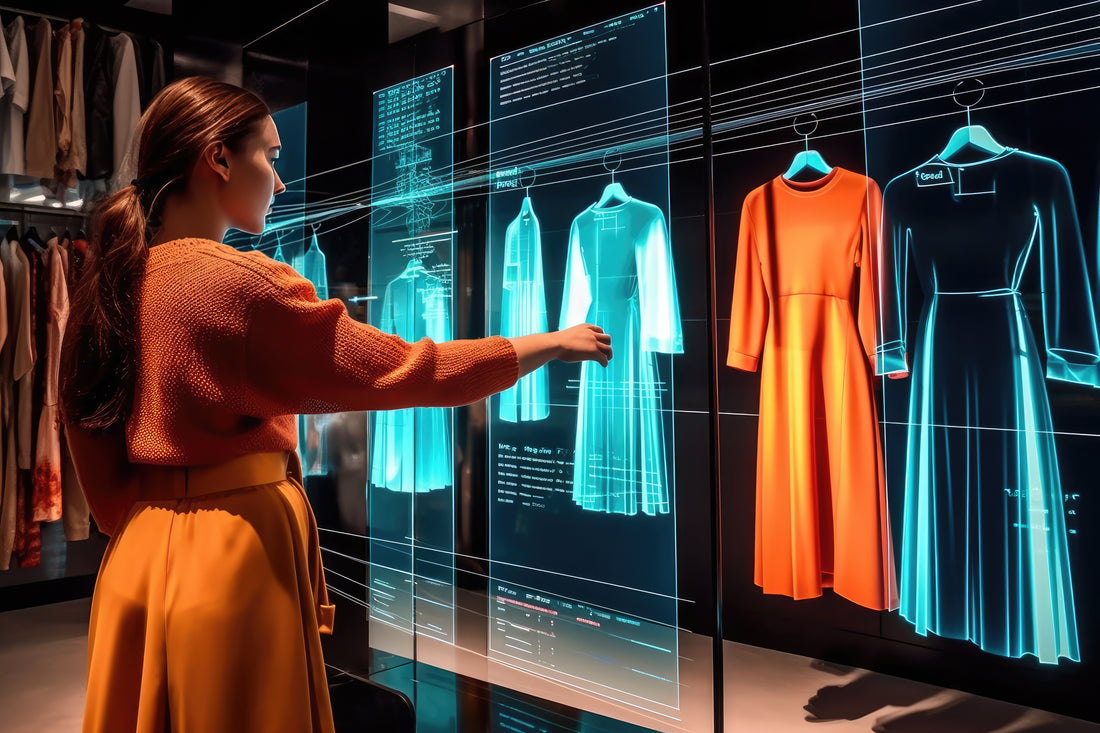The e-commerce landscape is undergoing a radical transformation, fueled by the seamless integration of Augmented Reality (AR) and Virtual Reality (VR) technologies. In this article, we embark on a comprehensive exploration, delving deep into the profound impact that AR and VR are exerting on the e-commerce sector. Business owners, take heed—this dynamic shift is not merely a trend; it's a pivotal evolution that demands close attention.
The Ascendance of AR and VR in E-commerce
Immersive Product Visualization: Unveiling a New Dimension
- Elevated Product Visualization: AR and VR technologies redefine the shopping experience, immersing consumers in a virtual realm where products come to life. This transcendent encounter allows customers not only to see but to interact with products, empowering them to make well-informed decisions.
- Mitigating Return Rates: The virtual "try-on" experience facilitated by AR extends beyond mere visualization, addressing a longstanding challenge in e-commerce—return rates. By allowing customers to virtually try on products, such as clothing or accessories, before purchasing, AR not only enhances satisfaction but drastically reduces the common concern of returns.
Revolutionizing the Shopping Journey: Beyond Borders
- Virtual Storefronts: VR is not just creating digital storefronts; it is revolutionizing the entire shopping journey. Customers are no longer confined to scrolling through static images; instead, they can immerse themselves in a virtual world where they can browse, explore, and shop. This infusion of tactile, physical shopping experiences into the digital realm fosters a profound connection between consumers and the products they seek.
- Tailored Shopping Experiences: AR and VR go beyond mere visuals; they are the architects of personalized shopping experiences. By analyzing user behavior and preferences, these technologies recommend products tailored to individual tastes. This personalized touch not only boosts customer engagement but also solidifies brand loyalty in the competitive e-commerce landscape.
Practical Applications of AR and VR in E-commerce
Bridging the Online-Offline Gulf: Navigating the Virtual Aisles
- AR-Guided In-Store Navigation: The bridge between online and offline shopping widens with AR's capacity to guide users through virtual replicas of physical stores. Online shopping now mirrors the in-store experience, offering a seamless journey through the virtual aisles. This functionality proves especially advantageous for brick-and-mortar businesses seeking to enhance their online presence.
- Immersive Product Catalogs: VR transcends traditional product catalogs, offering customers a 360-degree view of items. This goes beyond static images, providing an immersive and informative shopping journey. Customers can virtually touch, turn, and inspect products, bringing an unprecedented level of interactivity to the online shopping experience.
Addressing Consumer Uncertainty: Virtual Confidence Boosters
- Virtual Try-Ons Redefining Fashion: AR is not merely a tool; it's a game-changer for the fashion industry. The virtual try-on experience is empowering customers to virtually try on clothing, accessories, and cosmetics. This not only eliminates uncertainty but provides a confidence boost, allowing customers to make purchase decisions with assurance, all from the comfort of their homes.
- VR-Enabled Home Décor Visualization: In the home décor arena, VR is more than a visualization tool; it's a decision-making ally. Customers can now visualize how furniture and décor items will complement their living spaces before making purchases, significantly reducing the likelihood of mismatched choices.
The SEO Advantage of AR and VR Integration
In the fiercely competitive world of e-commerce, maintaining a prominent position in search engine rankings is paramount. The strategic amalgamation of AR and VR can significantly amplify SEO efforts, providing a competitive edge in the digital marketplace.
- Strategic Keyword Placement: Incorporating keywords related to AR and VR is not just about visibility; it's about capturing the attention of tech-savvy consumers. Phrases like "virtual try-on," "AR-enhanced shopping," and "VR product visualization" become powerful magnets, drawing in a discerning audience actively seeking innovative shopping experiences.
- Enriching Media Content: Beyond SEO, AR and VR contribute to a richer media landscape. Search engines favor websites with diverse content, and the integration of AR and VR elements not only enhances the user experience but also positively influences SEO rankings.
Challenges and Considerations for E-commerce Owners: Navigating the Roadblocks
While the advantages of AR and VR in e-commerce are evident, business owners must navigate potential challenges to fully harness their potential.
- Investment Considerations: Integrating AR and VR technologies may necessitate a substantial upfront investment. However, the long-term benefits, including increased sales and heightened customer satisfaction, often outweigh the initial costs.
- Addressing Technological Barriers: As with any technological evolution, there are challenges. Some customers may encounter technological barriers, such as device compatibility issues. E-commerce owners should consider providing alternative shopping methods to ensure accessibility for all users.
Anticipating the Future of E-commerce: Charting the Course
As AR and VR continue to evolve, their convergence in the e-commerce landscape is not just inevitable—it's transformative. E-commerce business owners must embrace these technologies to stay competitive and meet the evolving expectations of consumers.
- Early Adoption as Innovation: Embracing AR and VR is not just about keeping up; it's about leading the charge. Early adoption positions e-commerce businesses as industry innovators, attracting tech-savvy customers and setting the stage for future advancements.
- Prioritizing Customer-Centric Solutions: AR and VR should be viewed not merely as technological trends but as tools to enhance the customer experience. E-commerce owners should prioritize solutions that directly benefit their customers, ultimately driving growth and brand loyalty.
The integration of Augmented Reality and Virtual Reality transcends a mere trend; it signifies a transformative force reshaping the e-commerce landscape. Business owners who embrace these technologies stand to gain a competitive edge, providing customers with unparalleled shopping experiences and securing a prosperous future in the digital marketplace.
Connect with us today to lead your business into the future. As the e-commerce landscape undergoes a transformative shift, staying informed and leveraging emerging technologies is crucial for sustained success.

